This post is going up the week before Easter this year, and it’s just in time, hopefully, to help with some amazing feasts. Lamb is one of the quintessential spring foods, rife with the ry of fertility and new life, and it’s also just good. If you still haven’t nailed down your Easter dinner plans—or if you just need something to cook that is delicious and relatively quick, and you’re not reading this on the weekend it was published—this is the recipe you should pick. We’ll walk you through the thermal steps you need to cook perfect, rosy, medium-rare lamb chops that taste of spring and warm sun. Let’s get to it!
Cook all raw lamb steaks, chops, and roasts to a minimum internal temperature of 145° F (62.8° C) as measured with a food thermometer before removing meat from the heat source. For safety and quality, allow meat to rest for at least three minutes before carving or consuming.

A temp-wise method for roasting lamb chops
No matter how you season your lamb (which we’ll cover down below), it just won’t be any good if you cook it wrong. But don’t worry, we have the process down.
Lamb chops are not big. Each chop comes in at only a few bites, and that small mass of meat can be difficult to cook properly. That’s why we often cook lamb rib loins as a whole rack—there’s more thermal mass and more protection against overcooking. But if we stack all our chops end to end like we do in a whole rack, there’s less roasty-seasoned flavor on each chop. Can we get a better surface-to-meat ratio while still preserving the thermal advantages of a whole rack?
The answer to this conundrum is double-cut chops. Cutting a chop that is two bones thick adds thermal mass and slows cooking, making it easy to hit a nice medium-rare, but gives each chop a whole side surface of seasoning.
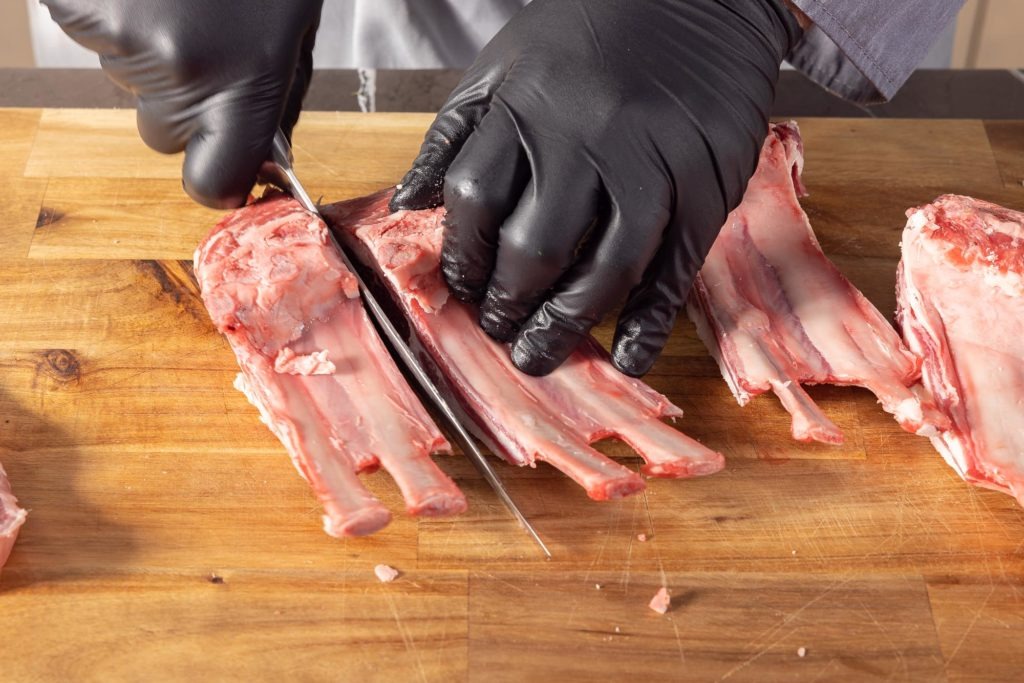
But a thicker chop is not the only temp-wise part of this method. To cook these chops to a delicious, seared medium rare, we do a two-stage cook. This is, in many ways, like a reverse sear, but it’s all done in the oven.
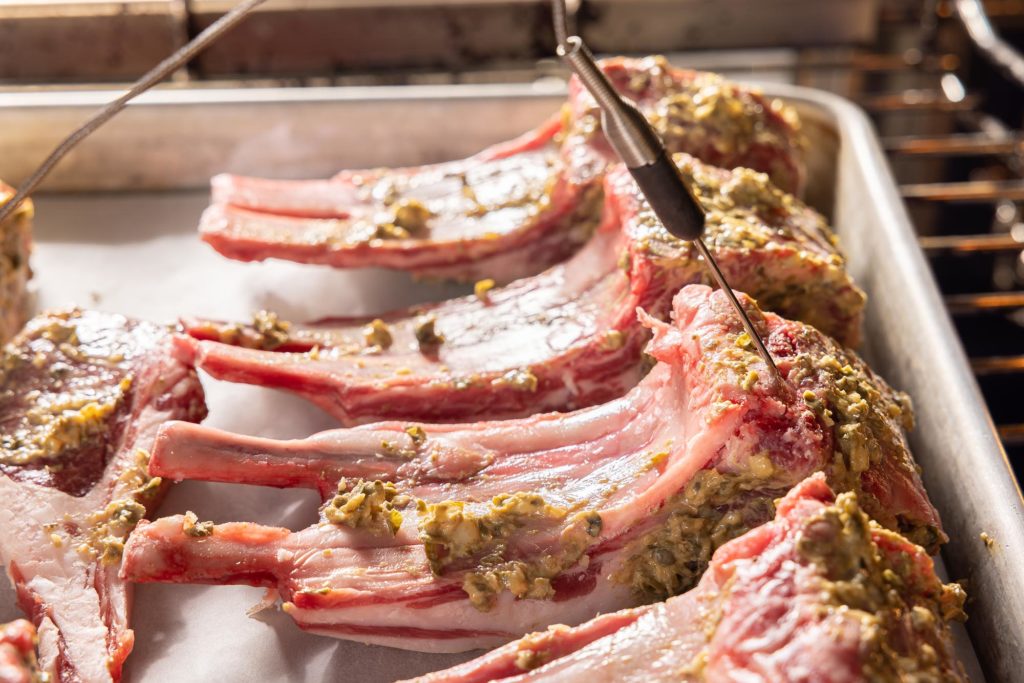
First, we roast the lamb chops on the center rack of the oven at 400°F (204°C) until their internal temperature reaches 110°F (43°C), then remove them from the oven to cool. Such a small piece of meat in such a hot oven will experience quite a bit of carryover cooking. In fact, our batch rose an impressive 12°F (7°C) during this stage. While we wait for the meat temp peak and start to fall again, we turn the oven to broil on high heat and move our oven rack up to the top or second highest position. When the meat temp cools back down to 110°F (43°C), we put the chops back in the oven to broil and brown. We pull them from heat again when they reach 120°F (49°C), counting on carryover cooking once again. This time they should rest up to about 132°F (56°C): perfectly medium rare.
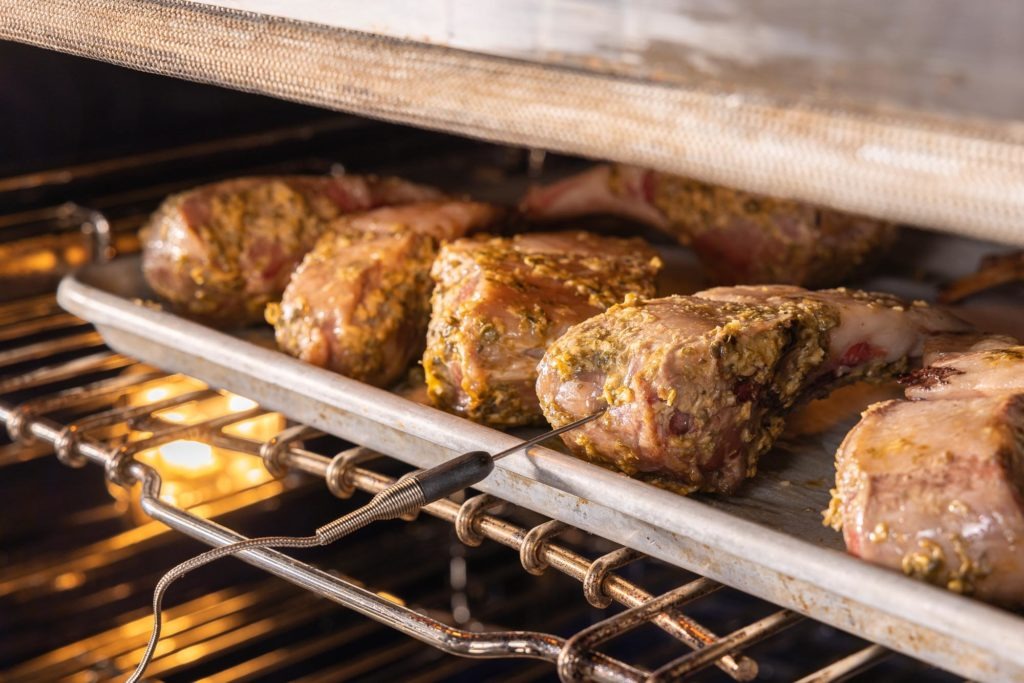
That may sound complex, but the results are worth it. And really, with ChefAlarm®, it’s not even that complex. Set the high-temp alarm for 110°F (43°C) and insert the optional needle probe into one of the chops. When the alarm sounds, take the meat out of the oven, then set the low temp alarm for 110°F (43°C). The meat will get warmer (carryover) and then start to cool.
Lambchops are best when cooked to medium rare, with a final temp of 130–135°F (54–57°C)
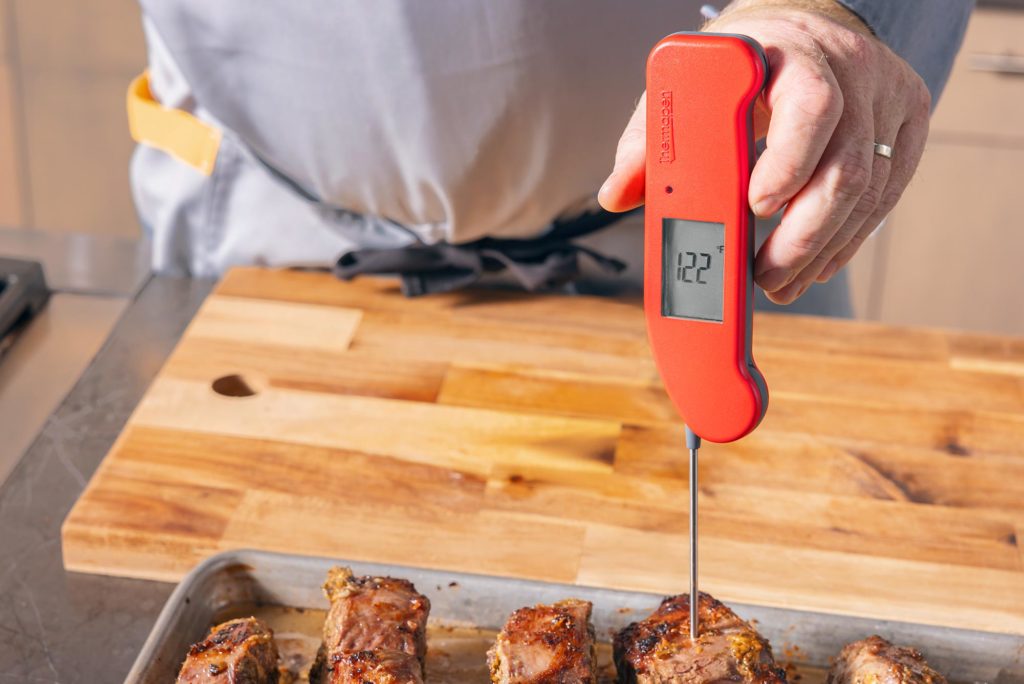
Having the low temp alarm set will let you know when it’s cooled enough to put back in the oven! Then you just reset your high-temp alarm and broil the chops, turning them as one side browns. Of course, you will want to verify the temp with your Thermapen® ONE, but that shouldn’t yield any big surprises.
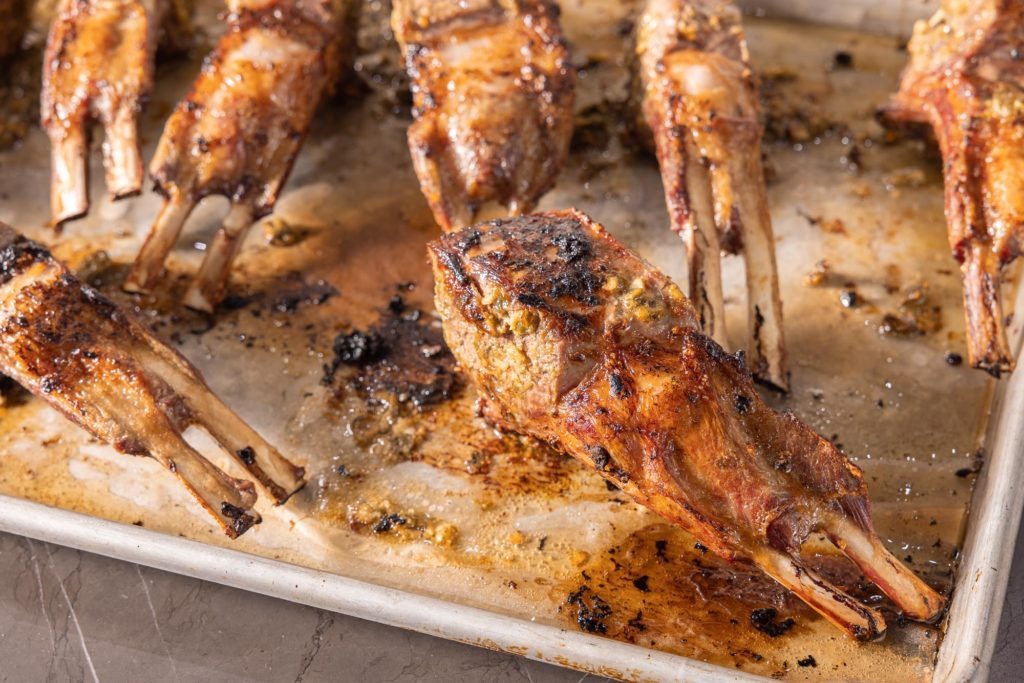
Let the chops rest to finish their carryover cooking, then split them down the middle and serve them. It’s pretty easy and it’s very tasty.
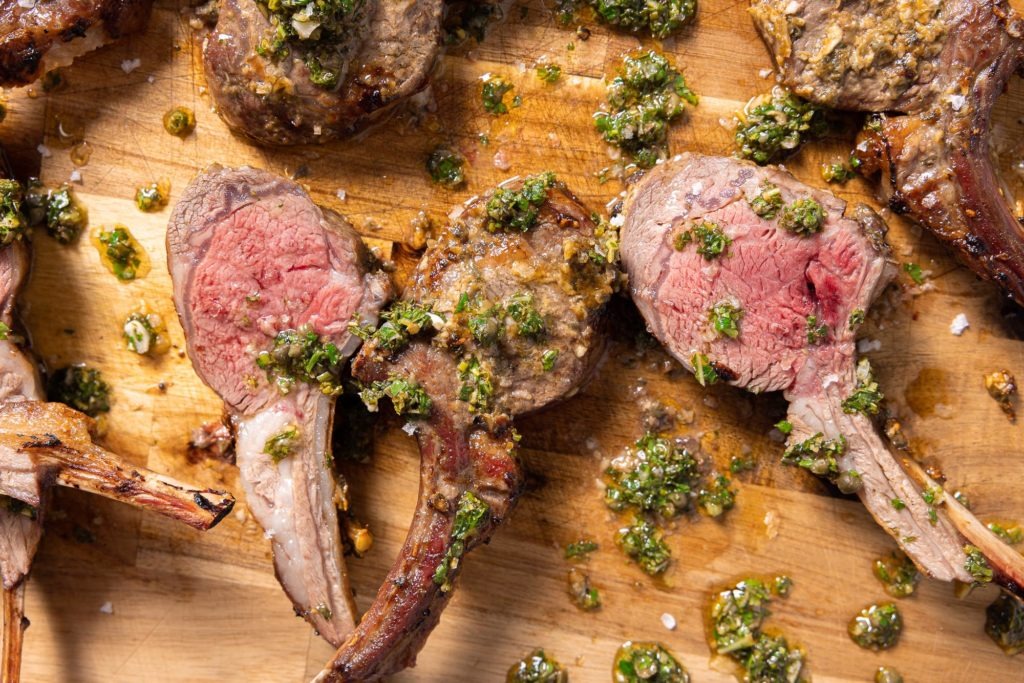
Lamb is delicious with just salt and pepper, but it’s even better with other flavors, too. It has a strong flavor, so it can stand up to some heavy seasoning and not get lost. In this case, we’re making a paste of capers, garlic, and dijon mustard. You can blend that together in a small food processor like we did, or you can use a mortar and pestle (this is one place where this may actually be more efficient). The garlic mellows in the high heat of the oven, and the capers and mustard bring bright acid and salinity. That would be good enough, but this recipe takes things one step further.
Lamb loves herbs, so making a minty, lemony chimichurri-style sauce is a great way to wake it up. You can use whatever herbs you like for it, but mint, parsley, and chives are a great combo.
Whether you’re looking for something for an Easter feast or just a delicious dinner on any other night, this recipe is a solid go-to. The chops spend a nice amount of time in the enzyme action zone so they are meltingly tender, and the two-stage cook with a cooldown in the middle is a fantastic way to get both the browning and doneness we want. Get your ChefAlarm and your Thermapen ONE out and try this recipe; you’ll be delighted that you did. Happy feasting!
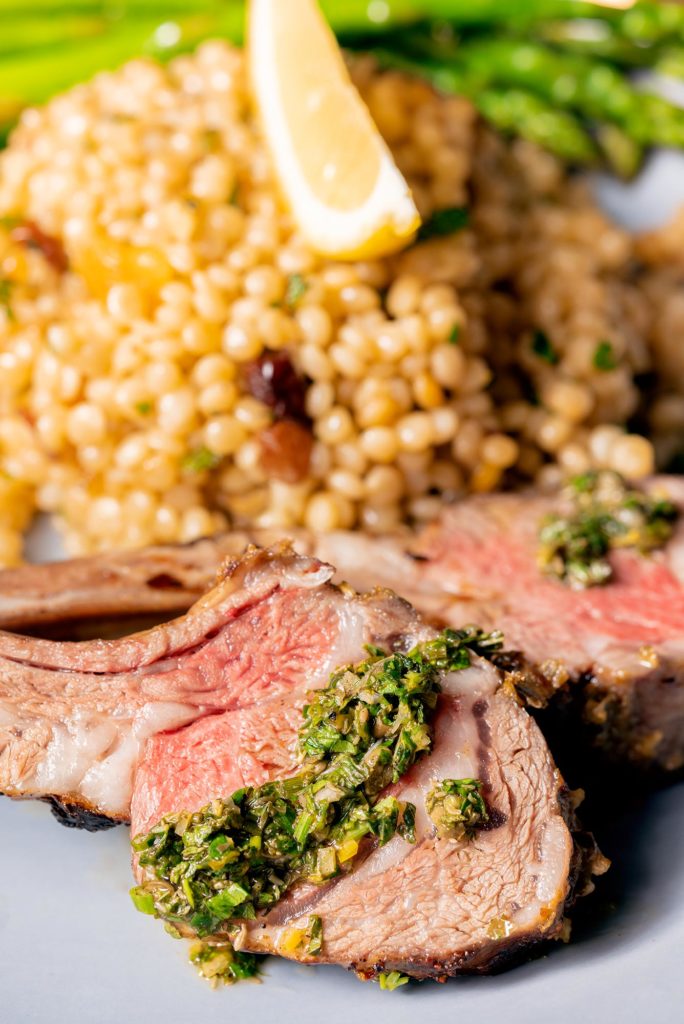

Best Lamb Loin Chops in a Skillet
FAQ
How do you know when lamb chops are done?
How do I know if lamb is cooked?
Can lamb chops be a little pink inside?
How long does it take to cook lamb?
How long do lamb chops need to cook?
The amount of time that the lamb chops need to cook will depend on the pan, the temperature of the meat before adding it to the pan, and the thickness of the lamb chops, so the better way to approach any meat cooked with this method is by using a reliable digital meat thermometer.
What temperature should lamb chops be cooked at?
Lamb chops are best when cooked medium when the internal temperature of the meat reaches 145 F on the instant thermometer. Avoid lamb chops being well done, even though they are still delicious that way, too. Keep in mind, lamb loin chops are very tender cut and they cook relatively quickly.
How do you cook lamb chops in a frying pan?
Use splatter screen, if needed. Then, reduce the heat to low, flip the lamb chops back to the other side, add minced garlic around and underneath the lamb chops, and cook the chops on low heat for about 10 more minutes. Remove the skillet from heat, cover with lid.
How do you know if Lamb is cooked?
If the juices are clear, the lamb is cooked. However, if they are pink or red, then the lamb needs to be cooked for a longer time. Finally, the touch test can also be used to determine if the lamb is cooked. Press the center of the lamb with a fork or your finger. Cooked lamb will feel springy and firm, while raw lamb will feel soft and squishy.
